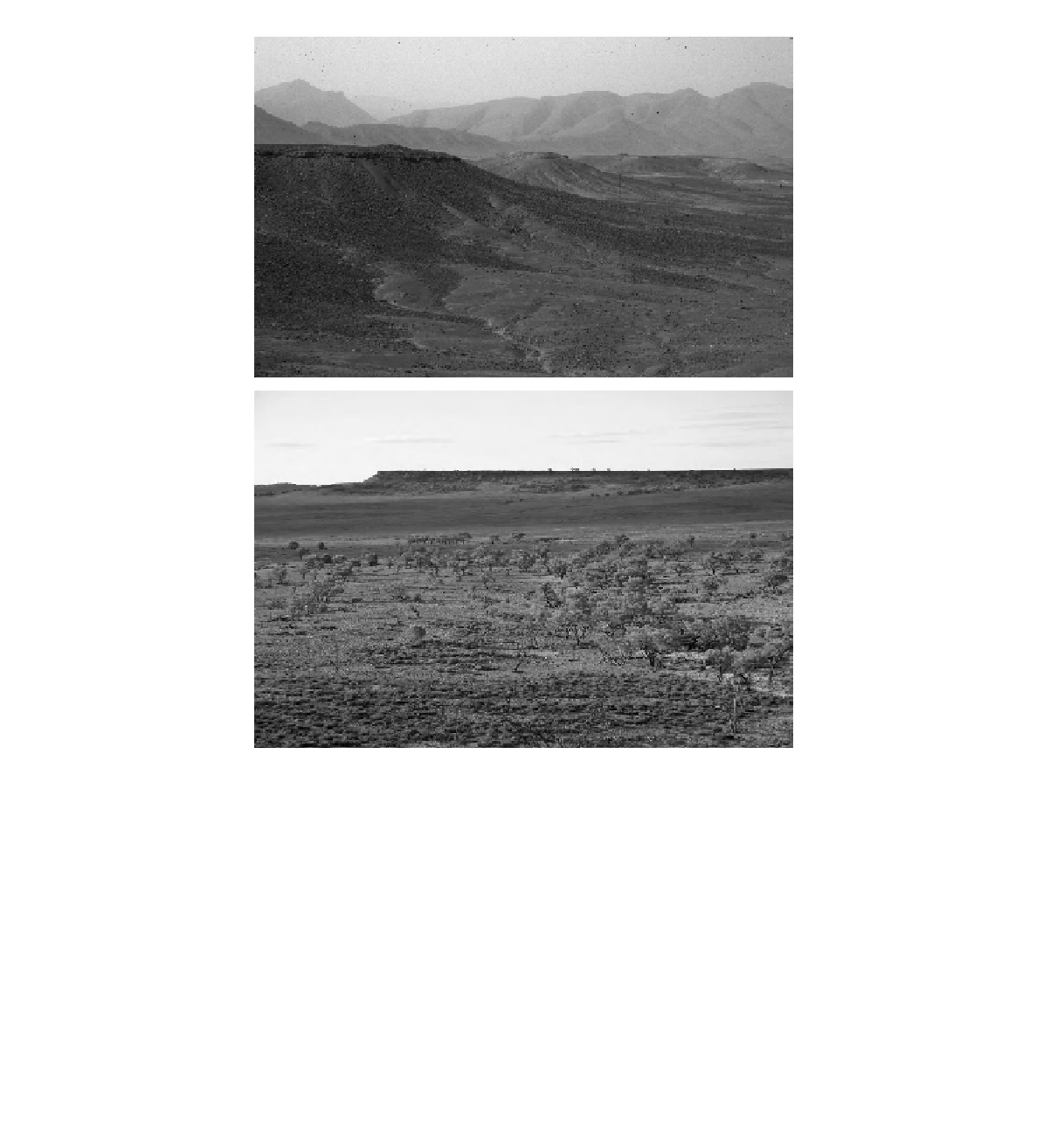Geoscience Reference
In-Depth Information
(a)
(b)
Figure 8.1
Duricrusts as erosional controls: (a) calcrete caprocks preserving palaeosurface remnants near Nkob, central Morocco;
(b) pedogenic silcrete sheet capping a mesa near Tibooburra, New South Wales, Australia.
8.2
Sodium nitrate deposits
in a landscape but also siliceous calcrete (or
sil-calcrete
)
and calcareous silcrete (or
cal-silcrete
), depending upon
the proportions of silica and calcium carbonate present
(Nash and Shaw, 1998). Forms such as calcretised fer-
ricrete (
cal-ferricrete
) or iron-cemented calcrete (
ferro-
calcrete
) and silcrete (
ferro-silcrete
) have also been iden-
tified in some environments (Nash, Shaw and Thomas,
1994; Lee and Gilkes, 2005; Ramakrishnan and Tiwari,
2006). Finally, it should be noted that not all of the types of
crust described are found exclusively in warm desert en-
vironments; some can persist when the climate becomes
wetter. Similar crusts may also form in humid climates
or in regions where, despite low temperatures, high rates
of evaporation promote aridity. As such, desert crusts of-
ten have distributions that defy classification according to
8.2.1
General characteristics and distribution
Sodium nitrate (nitratite or nitratine, NaNO
3
) is highly
soluble compared with other salts - at 35
◦
C its solubility
in water is 49.6 %, whereas that of NaCl is 26.6 % and
of calcium sulfate 0.21 % (Goudie and Heslop, 2007) -
and therefore only persists in extremely dry environ-
ments. The one location where deposits are found in
great abundance and thickness is the hyper-arid Atacama
Desert of Chile, where high-grade
salitre
deposits were
mined commercially as fertiliser from the 1820s until af-
ter World War I (Figure 8.3). Sodium nitrate deposits
have also been described in various cave (Hill and Forti,

